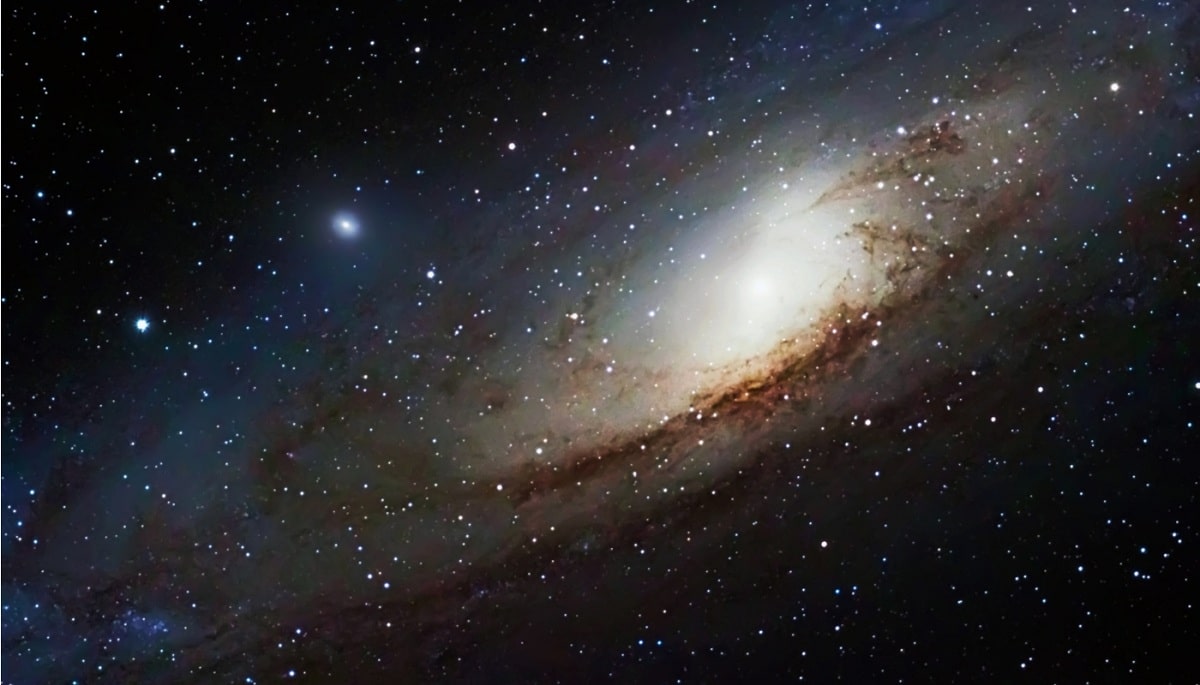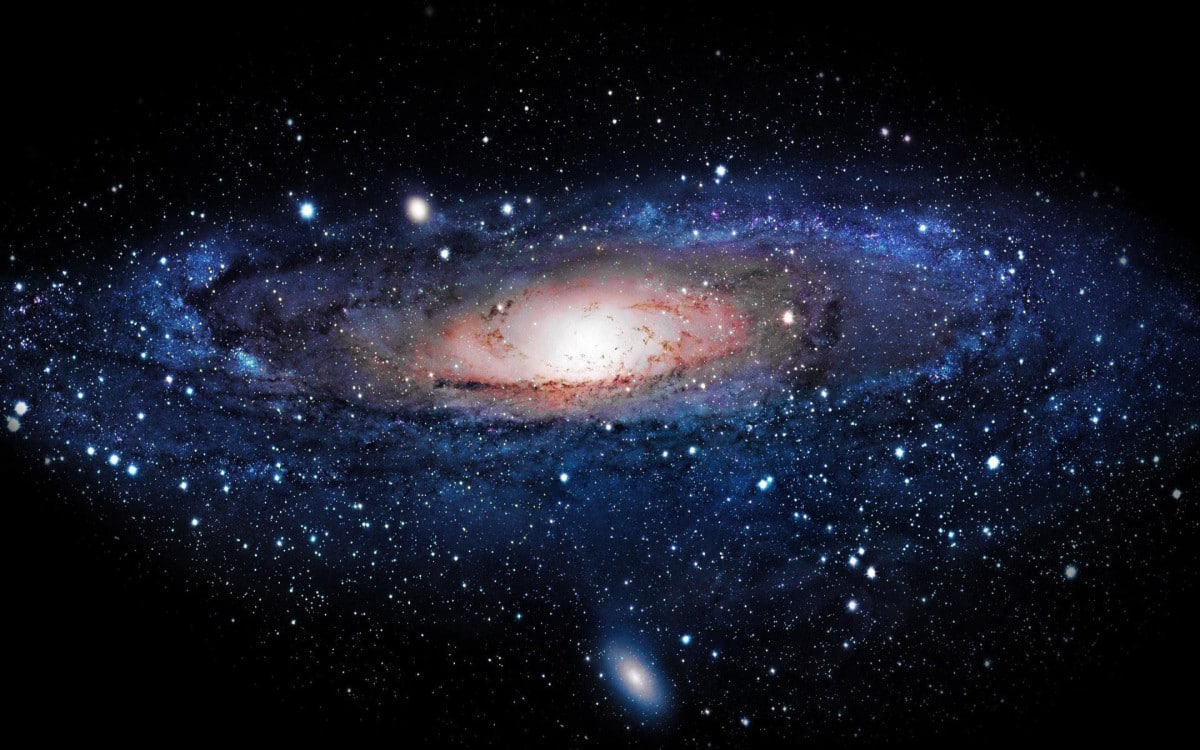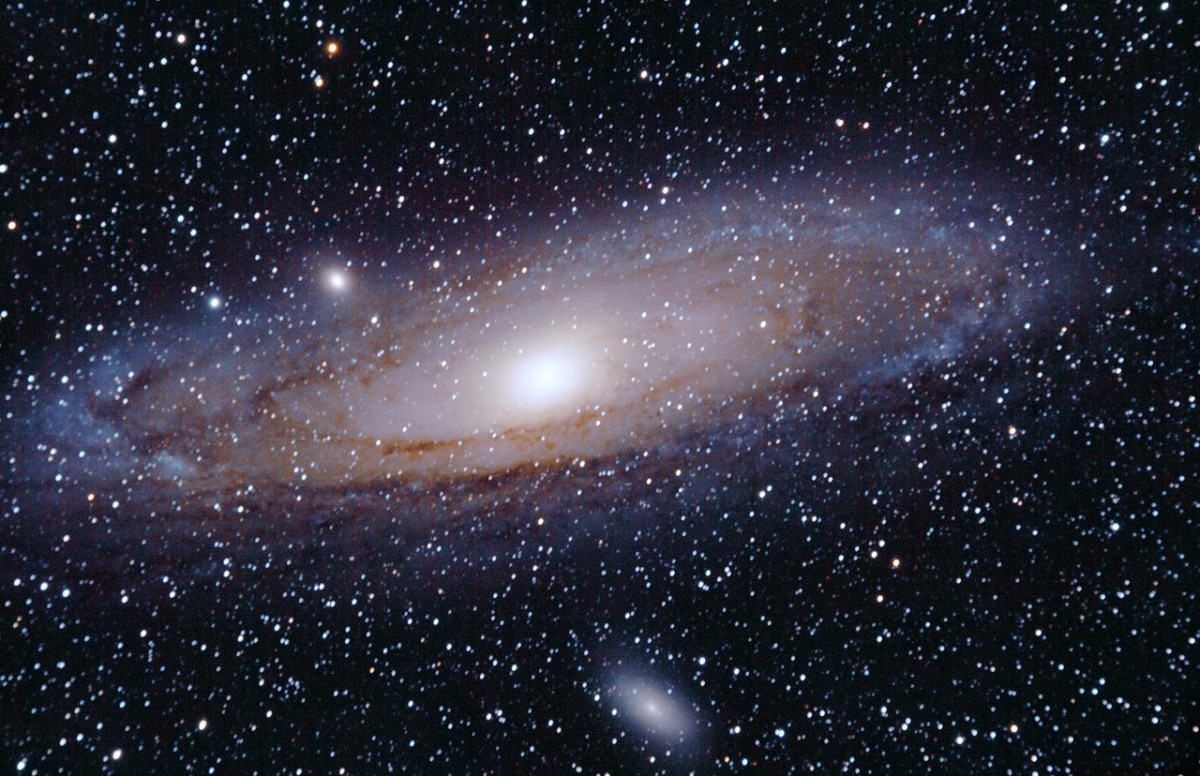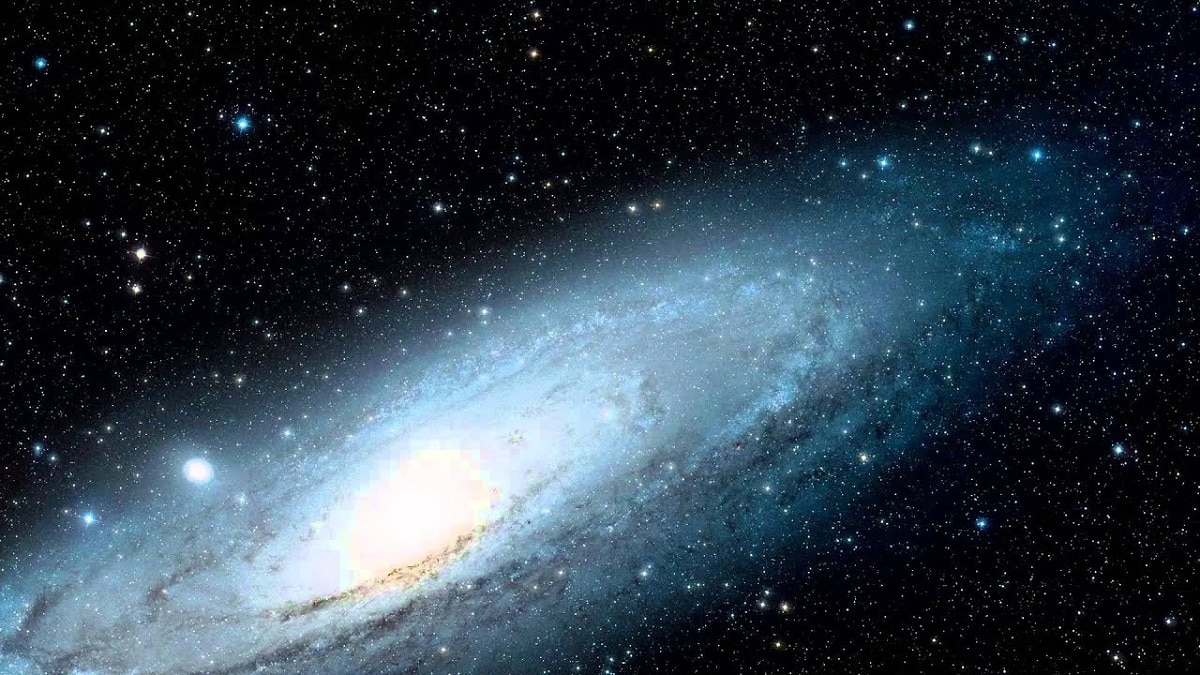
Andromeda is a galaxy made up of star systems, dust, and gas, all of which are affected by gravity. It is located 2,5 million light years from Earth and is the only celestial body visible to the naked eye that does not belong to the Milky Way. The first record of the galaxy dates back to 961, when the Persian astronomer Al-Sufi described it as a small cluster of clouds in the constellation Andromeda. Most likely, other ancient peoples also managed to recognize it.
In this article we are going to tell you everything you need to know about Andromeda galaxy, its characteristics and importance.
Key features

Andromeda is a spiral galaxy whose shape is similar to our Milky Way. It is shaped like a flat disc with a protrusion and several spiral arms in the center. Not all galaxies have this design. Hubble observed hundreds of them. In their famous tuning fork diagram or the Hubble sequence that is still used today, they are divided into ellipticals (E), lenticulars (L), and spirals (S).
In turn, spiral galaxies are divided into two groups, those with central bars and those without central bars. The current consensus is that our Milky Way is a barred spiral galaxy Sb. Although we cannot see it from the outside, Andromeda is a simple or unbarred spiral galaxy Sb, and we can almost see it from here.
Let's see the most significant characteristics of Andromeda:
- It has dual core
- Its size is comparable to that of the Milky Way. Andromeda is only slightly larger in size, but the Milky Way has a larger mass and more dark matter.
- There are several satellite galaxies in Andromeda that interact gravitationally: elliptical dwarf galaxies: M32 and M110 and small spiral galaxy M33.
- Its diameter is 220.000 light years.
- It is about twice as bright as the Milky Way and has a billion stars.
- Almost 3% of the energy emitted by Andromeda is in the infrared region, while for the Milky Way this percentage is 50%. Usually this value is related to the rate of star formation, so it is high in the Milky Way and low in Andromeda.
How to visualize the Andromeda galaxy

The Messier catalog is a list of 110 celestial bodies dating back to 1774, which names the visible Andromeda galaxy in the constellation of the same name as M31. Remember these names when searching for galaxies on the sky map, as they are used in many astronomy applications on computers and mobile phones.
To visualize Andromeda, it is convenient to locate the constellation Cassiopeia first, which has a very distinctive shape of the letter W or M, depending on how you look at it. Cassiopeia is easy to see in the sky, and the Andromeda Galaxy lies between it and the constellation Andromeda. Remember that to see the Milky Way with the naked eye, the sky must be very dark and there are no artificial lights nearby. However, even on a clear night, the Milky Way can be seen from densely populated cities, but at least the help of binoculars is needed. In these cases, a small white oval will appear in the indicated area.
Using a telescope you can distinguish more details of the galaxy and can also locate its two small companion galaxies.
The best time of year to see it is:
- North Hemisphere: Although visibility is low throughout the year, the best months are August and September.
- Southern hemisphere: between October and December.
- Finally, it is recommended to observe during the new moon, keep the sky very dark and wear appropriate clothing for the season.
Structure and origin of the Andromeda galaxy

Andromeda's structure is basically the same as that of all spiral galaxies:
- An atomic nucleus with a supermassive black hole inside.
- The bulb that surrounds the nucleus and is filled with stars is progressing in evolution.
- Disk of interstellar matter.
- The halo, a huge diffuse sphere that surrounds the structure already named, blends in with the halo of the neighboring Milky Way.
The galaxies originated in primitive protogalaxies or gas clouds, and were organized in a relatively short period of time after the Big Bang, and the Big Bang created the universe. During the Big Bang, the lighter elements hydrogen and helium were formed. In this way, the first proto-galaxy must be composed of these elements.
At first, the matter is evenly distributed, but at some points it accumulates a little more than at others. Where the density is higher, gravity begins to act and causes more material to accumulate. Over time, the gravitational contraction created protogalaxies. Andromeda may be the result of the merger of several protogalaxies that took place around 10 billion years ago.
Considering that the estimated age of the universe is 13.700 billion years, Andromeda formed shortly after the Big Bang, just like the Milky Way. During its existence, Andromeda absorbed other protogalaxies and galaxies, helping it to form its current form. Furthermore, their rate of star formation has also changed over time, because the rate of star formation increases during these approaches.
Cepheids
Cepheid variables they are extremely bright stars, much brighter than the sun, so they can be seen even from very far away. Polaris or Pole Star is an example of Cepheid variable stars. Their characteristic is that they will undergo periodic expansion and contraction, during which their brightness will periodically increase and decrease. That is why they are called pulsating stars.
When two equally bright lights are seen in the distance at night, they may have the same inherent brightness, but one of the light sources may also be less bright and closer, so they look the same.
The inherent magnitude of a star is related to its luminosity: it is obvious that the greater the magnitude, the greater the luminosity. On the contrary, the difference between the apparent magnitude and the intrinsic magnitude is related to the distance to the source.
I hope that with this information you can learn more about the Andromeda galaxy and its characteristics.